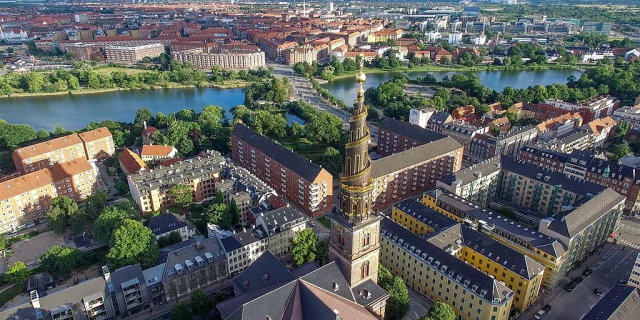The Ny Carlsberg Glyptotek ("ny" means "new" in Danish; "Glyptotek" comes from the Greek root glyphein, to carve, and theke, storing place), commonly known simply as Glyptoteket, is an art museum in Copenhagen, Denmark. The collection represents the private art collection of Carl Jacobsen (1842–1914), the son of the founder of the Carlsberg Breweries.
Primarily a sculpture museum, as indicated by the name, the focal point of the museum is antique sculpture from the ancient cultures around the Mediterranean, including Egypt, Rome and Greece, as well as more modern sculptures such as a collection of Auguste Rodin's works, considered to be the most important outside France. However, the museum is equally noted for its collection of paintings that includes an extensive collection of French impressionists and Post-impressionists as well as Danish Golden Age paintings.
The French Collection includes works by painters such as Jacques-Louis David, M...Read more
The Ny Carlsberg Glyptotek ("ny" means "new" in Danish; "Glyptotek" comes from the Greek root glyphein, to carve, and theke, storing place), commonly known simply as Glyptoteket, is an art museum in Copenhagen, Denmark. The collection represents the private art collection of Carl Jacobsen (1842–1914), the son of the founder of the Carlsberg Breweries.
Primarily a sculpture museum, as indicated by the name, the focal point of the museum is antique sculpture from the ancient cultures around the Mediterranean, including Egypt, Rome and Greece, as well as more modern sculptures such as a collection of Auguste Rodin's works, considered to be the most important outside France. However, the museum is equally noted for its collection of paintings that includes an extensive collection of French impressionists and Post-impressionists as well as Danish Golden Age paintings.
The French Collection includes works by painters such as Jacques-Louis David, Monet, Pissarro, Renoir, Degas and Cézanne, as well as those by Post-impressionists such as van Gogh, Toulouse-Lautrec and Bonnard. The museum's collection includes all the bronze sculptures of Degas, including the series of dancers. Numerous works by Norwegian-Danish sculptor Stephan Sinding are featured prominently in various sections of the museum.
Carl Jacobsen was a dedicated art collector. He was particularly interested in antique art, but over the years he also acquired a considerable collection of French and Danish sculptures. When his private villa in 1882 was extended with a winter garden, sculptures soon outnumbered plants in it. The same year the collection was opened to the public. In the following years the museum was expanded on a number of occasions to meet the need for more space for his steadily growing collections. In 1885 his 'house museum' had grown to a total of 19 galleries, the first 14 of which had been designed by Vilhelm Dahlerup while Hack Kampmann had built the last four as well as conducted a redesign of the winter garden.[1]
New museum View from Holck's Bastion of the site which was chosen for the new Glyptotek, painting from 1839 by Sally Henriques
View from Holck's Bastion of the site which was chosen for the new Glyptotek, painting from 1839 by Sally HenriquesIn spite of the many extensions, it was finally clear the existing premises were inadequate and that a new building was needed. On 8 March 1888 Carl Jacobsen donated his collection to the Danish State and the City of Copenhagen on condition that they provided a suitable building for its exhibition. Copenhagen's old fortifications had recently been abandoned and a site was chosen on a ravelin outside Holcks Bastion in the city's Western Rampart, just south of the Tivoli Gardens which had been founded in 1843.[2] Jacobsen was displeased with the location which he found to be too far from the city centre and he had also reservations about the proximity of Tivoli which he found common. Instead he wanted a building on the emerging new city hall square, yet in the end he accepted.[3]
It was Carl Jacobsen who chose the name for the museum, with inspiration from Ludwig I's Glyptothek in Munich, as well as Vilhelm Dahlerup as the architect for the assignment. The moat around the radan was filled and the new museum opened first on 1 May 1897. At first it only included Jacobsen's modern collection with French and Danish works from the 18th century.
In January 1899 Carl Jacobsen donated his collection of Antique art to the museum which made an expansion necessary. It was designed by Hack Kampmann while Dahlerup designed a winter garden which connected the new wing to the old building. It was inaugurated in 1906.
In 1996 the museum was once again extended, this time with an infill constructed in one of its courtyards to the design of Henning Larsen.[4] In 2006, the building underwent a major renovation programme under the direction of Danish architects Dissing + Weitling.[5] and Bonde Ljungar Arkitekter MAA.[6]



































Add new comment